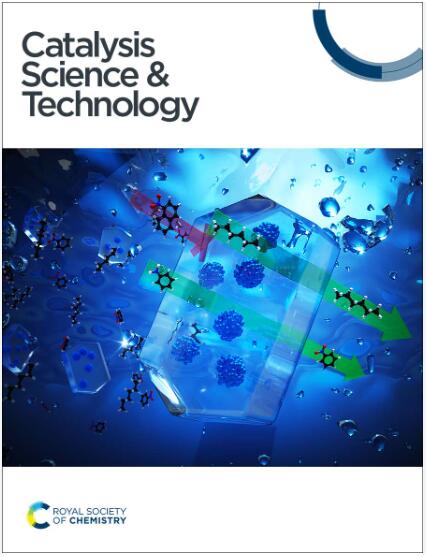A computational mechanistic study on the Pd(ii)-catalyzed γ-C(sp3)–H lactamization and further rational design†
IF 4.2
3区 化学
Q2 CHEMISTRY, PHYSICAL
引用次数: 0
Abstract
γ-Lactams are present in numerous natural and synthetic bioactive compounds, exhibiting a wide range of biological activities. Compared to traditional multi-step synthesis, intramolecular amination of aliphatic amides can directly construct valuable γ-lactam motifs from abundant amino acid precursors. Recently, Yu and coworkers reported novel 2-pyridone ligand-facilitated Pd(ii)-catalyzed γ-C(sp3)–H lactamization of amino acid-derived natural amides. This protocol is notable for its use of practical and environmentally friendly tert-butyl hydroperoxide (TBHP) as the sole oxidant and its broad substrate scope. In this study, we present a comprehensive computational mechanistic study on the Pd(ii)-catalyzed γ-C(sp3)–H lactamization, elucidating the key roles of the oxidant TBHP and Pd oxidation state transformations. The entire catalytic process can be divided into three stages: (i) the formation of actual active species (OAc)Pd–L1 followed by γ-C(sp3)–H bond activation generating the six-membered-metallacycle Pd(ii) intermediate IM4; (ii) with the assistance of oxidant TBHP, the C–N bond annulation occurs to complete the γ-lactamization process; (iii) product formation and active species (OAc)Pd–L1 regeneration for the next catalytic cycle. Each stage is both kinetically and thermodynamically feasible. Intermediate 1/3Pd3(OAc)6 to the IM2 step, with a barrier of 25.4 kcal mol−1, should be the rate-determining step (RDS) in the whole catalysis. Based on mechanistic study, new pyridone ligands (i.e., L3 and L4) affording lower free energy barriers were further rationally designed, which will help to improve current catalytic systems and facilitate the development of new Pd(ii)-catalyzed γ-C(sp3)–H lactamization reactions.

Pd(ii)催化γ-C(sp3) -H内酰胺化的计算机理研究及进一步合理设计
γ-内酰胺存在于许多天然和合成的生物活性化合物中,具有广泛的生物活性。与传统的多步合成相比,脂肪酰胺分子内胺化可以直接利用丰富的氨基酸前体构建有价值的γ-内酰胺基序。最近,Yu和同事报道了一种新的2-吡啶酮配体促进Pd(II)催化γ-C(sp3) -H内酰胺化氨基酸衍生的天然酰胺。该方案的特点是使用实用和环保的氢过氧化叔丁基(TBHP)作为唯一的氧化剂和广泛的底物范围。在本研究中,我们对Pd(II)催化的γ-C(sp3) -H内酰胺化进行了全面的计算机制研究,阐明了氧化剂TBHP和Pd氧化态转变的关键作用。整个催化过程可分为三个阶段:(i)实际活性物质(OAc)Pd - l1的形成,随后γ-C(sp3) -H键活化,生成六元金属环Pd(II)中间体IM4;(ii)在氧化剂TBHP的辅助下,C-N键环化完成γ-内酰胺化过程;(iii)下一个催化循环的产物形成和活性物质(OAc) Pd-L1再生。每个阶段在动力学和热力学上都是可行的。中间体1/ 3pd3 (OAc)6到IM2的势垒为25.4 kcal mol−1,应该是整个催化过程中的速率决定步骤(RDS)。在机理研究的基础上,进一步合理设计了具有较低自由能垒的新型吡啶酮配体(即L3和L4),这将有助于改进现有的催化体系,促进新型Pd(II)催化的γ-C(sp3) -H内酰胺化反应的发展。
本文章由计算机程序翻译,如有差异,请以英文原文为准。
求助全文
约1分钟内获得全文
求助全文
来源期刊

Catalysis Science & Technology
CHEMISTRY, PHYSICAL-
CiteScore
8.70
自引率
6.00%
发文量
587
审稿时长
1.5 months
期刊介绍:
A multidisciplinary journal focusing on cutting edge research across all fundamental science and technological aspects of catalysis.
Editor-in-chief: Bert Weckhuysen
Impact factor: 5.0
Time to first decision (peer reviewed only): 31 days
 求助内容:
求助内容: 应助结果提醒方式:
应助结果提醒方式:


